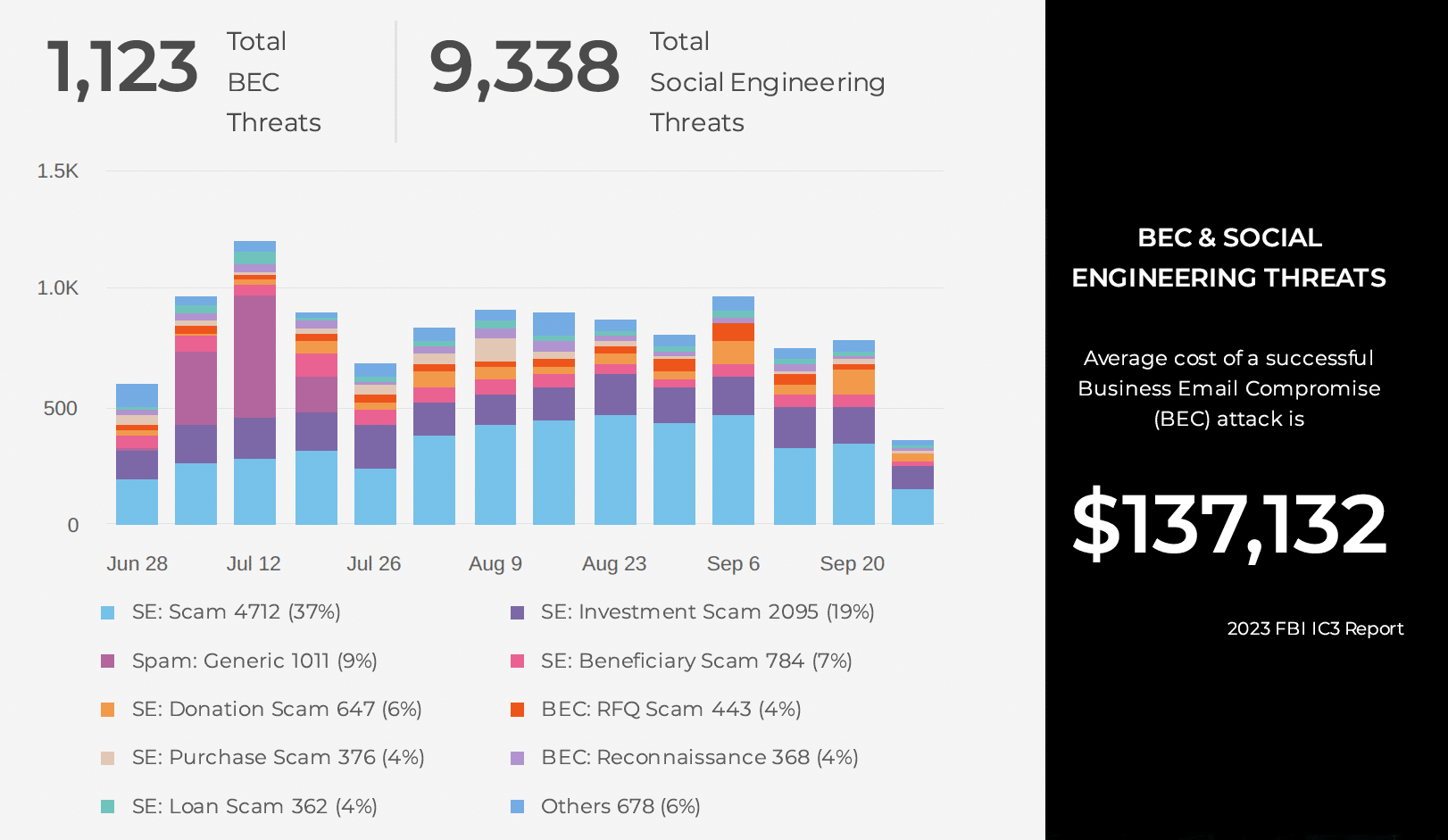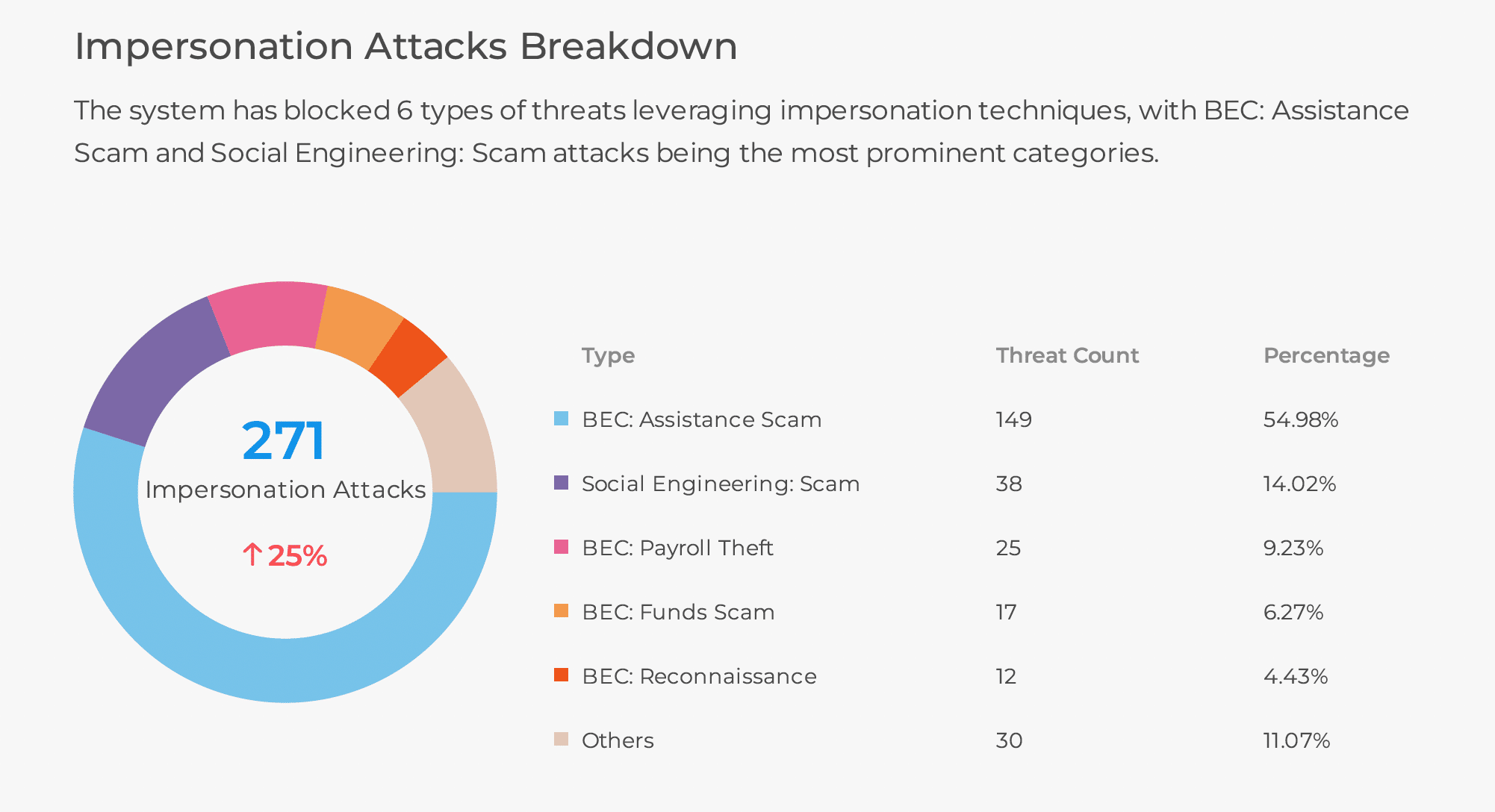
Latest FBI IC3 Report shows a record year for cybercrime: record-setting $12.5 billion in losses
The 2023 FBI IC3 report reveals not just numbers but narratives that underscore the adaptability and cunning of today’s cyber adversaries. With a record-setting $12.5 billion in losses, a 22% increase from the previous year, the report is a wake-up call to the relentless evolution of cyber threats. Here’s a deeper dive into the findings and how the cybersecurity community can respond effectively.
Last year was unprecedented in the scale of financial damage wrought by cybercrime. The $12.5B in losses is a stark reminder of the escalating arms race between cybercriminals and defenders. It emphasizes the critical need for advanced, multi-layered defense strategies to protect our digital and financial assets.
Investment Fraud: The Expanding Battlefield
Dominating the landscape of cybercrime, investment fraud accounted for $4.57 billion in losses. Disturbingly, these scams have evolved beyond their traditional email origins, now proliferating on social media platforms and messaging apps like WhatsApp. This shift highlights a crucial gap in traditional email security defenses and underscores the necessity of adopting a more holistic security strategy that encompasses all forms of digital communication.
Business Email Compromise (BEC): An Enduring Menace
Business Email Compromise (BEC) continues to be a formidable threat, with losses amounting to $2.9 billion. The sophistication of these scams has reached new heights, with cybercriminals now employing a mix of social engineering and technological manipulation to impersonate trusted contacts and divert financial transactions. This evolution calls for a rigorous reassessment of financial transaction protocols and a stronger emphasis on verification processes that go beyond the digital realm.
No Longer Just a Problem for Vulnerable Populations
While all humans are potentially susceptible to phishing and social engineering attacks regardless of age, gender, title/position, socioeconomic status etc. (it’s in our nature and why we call it “human error”), there are correlations with specific demographics and attack types, if we look at the patterns in the data. For BEC scams, there isn’t a specific age group singled out in the report, but there is a clear correlation with those in positions to authorize or execute financial transactions. We can interpret this as these groups are more heavily targeted with BEC scams in particular. On the other hand, investment scams, especially those involving cryptocurrency, have notably preyed on a wider demographic, with individuals aged 30 to 49 years old reporting the most significant losses. This trend highlights the appeal of investment opportunities and the persuasive tactics used by fraudsters to target those seeking to grow their wealth, underscoring the importance of vigilance and education across all age groups to combat these evolving cyber threats.
The Evolution of BEC
From Simple Impersonation to Complex Schemes
Initially, BEC scams primarily involved simple impersonation tactics where attackers would mimic the email addresses of company executives to request fraudulent wire transfers from employees. However, over the last few years, these schemes have significantly advanced. Fraudsters have moved beyond mere email spoofing to intricate social engineering and computer intrusion techniques. These methods now include compromising legitimate business email accounts, manipulating email rules to hide their tracks, and even impersonating third-party vendors and clients more convincingly.
Exploiting New Technologies and Platforms
The methodology of BEC attacks has also diversified. Cybercriminals have begun leveraging a variety of platforms beyond email, such as messaging apps and virtual meeting tools, to carry out their schemes. This shift reflects the broader adoption of new communication technologies in business operations, which has expanded the attack surface for cybercriminals to exploit.
Targeting a Wider Range of Transactions
Another significant change in BEC scams is the expansion of their targets. Initially focusing on wire transfer fraud, these attacks now encompass a wider range of financial transactions. This includes payroll diversion, fraudulent requests for tax information, and even schemes involving the manipulation of digital payment platforms. The use of cryptocurrency in these scams has also risen, with attackers increasingly directing funds to crypto wallets for swift and less traceable transactions.
Increasing Sophistication in Social Engineering
Perhaps the most concerning evolution of BEC scams is the heightened sophistication of social engineering tactics employed by attackers. Today’s BEC schemes often involve meticulous research and the crafting of highly convincing narratives that exploit the specific operational processes and vendor relationships of targeted businesses. This level of customization in attack strategies has made BEC scams more difficult to detect and prevent.
Generative AI: Accelerating the Evolution of BEC Strategies
Generative AI has significantly shifted the landscape of BEC by enabling attackers to automate the creation and translation of phishing emails with minimal resources. This advancement allows malicious actors to focus their efforts on devising more sophisticated and creative attack strategies, accelerating the evolution of new patterns at an unprecedented rate. As a result, the threat landscape is becoming increasingly dynamic, demanding equally innovative defensive measures from organizations.
Adapting to the BEC Threat Landscape
The transformation of BEC attacks underscores the need for businesses to continually adapt their cybersecurity strategies. This involves enhancing email security protocols, educating employees about the risks of sophisticated social engineering tactics, and implementing multi-factor authentication and other security measures across all digital communication and financial transaction platforms.
In response to the evolving BEC threat landscape, organizations must also embrace a culture of skepticism and verification for all financial transactions, particularly those requested via email or other digital communication channels. By staying informed about the latest trends in BEC scams and proactively bolstering their defenses, businesses can better protect themselves against these ever-changing cyber threats.
The insights from the 2023 IC3 report serve as a crucial reminder of the dynamic nature of cyber threats, particularly BEC scams, urging a vigilant, informed, and adaptive approach to cybersecurity in the digital age.
Strategic Imperatives for a Cyber-Secure Future
The insights from the 2023 IC3 report compel us to consider a more comprehensive approach to cybersecurity as laid out below.
Expand Beyond Email Security
Phishing is no longer an email-only problem. Embrace security solutions that safeguard against threats across all communication platforms, acknowledging that cybercriminals are no longer confined to email-based attacks. You should consider solutions that protect everywhere a user can be phished like SMS, Mobile, Teams, LinkedIn, WhatsApp.
Educate and Empower
Invest in continuous education and training programs to equip individuals and organizations with the knowledge to identify and counteract emerging cyberthreats.
Embrace Advanced Technologies
Implement cutting-edge technologies that leverage artificial intelligence (AI) and machine learning for predictive analytics, anomaly detection, and automated threat neutralization.
Foster Collaboration
The battle against cybercrime is a collective endeavor. Engaging with the broader cybersecurity community to share intelligence and innovate defense mechanisms is vital for staying ahead of attackers.
In essence, the 2023 IC3 report is a compelling narrative of the challenges and complexities defining the current cyber threat landscape. It calls for a proactive and dynamic response that goes beyond conventional defenses, advocating for a blend of education, technological innovation, and collaboration to secure our digital future. As we navigate through the digital epoch, our resolve to enhance cybersecurity education, embrace technological advancements, and cultivate a spirit of collaboration will be instrumental in safeguarding against the ever-evolving tide of cybercrime. Together, we have the power to fortify our digital realms, ensuring a secure and resilient cyberspace for all.


